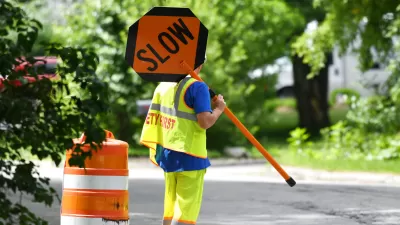People of color are finding it more and more difficult to secure housing in New Orleans, as new and old forms of housing discrimination -- and overt racism -- are conspiring to keep them out.
"Throughout the [New Orleans] region, historically white suburbs, as well as one African-American neighborhood, have been tightening the housing noose by passing laws that restrict, limit or simply ban the building--and even renting--of homes that traditionally benefit poor and working-class people of color. Couched in the banal language of zoning and tax credits, density and permissive-use permits, these efforts often pass for legal and rarely raise eyebrows outside the small community of fair-housing monitors. But taken together--and accompanied, as they so often are, by individual acts of flagrant racism--they represent one of the most brazen and sweeping cases of housing discrimination in recent history.
Among the first and most aggressive to take action was St. Bernard Parish, 84 percent white before the storm and working to rebuild itself that way. Barely two months into the recovery, St. Bernard's governing council passed a twelve-month ban on 'the re-establishment and development' of multifamily dwellings, stalling the reconstruction of affordable housing complexes. But the council truly distinguished itself in September 2006 when it passed an ordinance that, critics said, danced about as close to legalized segregation as perhaps any law since 1972, the year Louisiana finally deleted its Jim Crow laws. Known as the 'blood relative ordinance,' this law prohibited homeowners from renting their properties to anyone who was not a bona fide blood relation without first obtaining a permit--a loaded concept anywhere, but particularly in St. Bernard, where the white majority owned 93 percent of the pre-storm housing.
The post-Katrina orgy of ordinances and moratoriums falls squarely within [the] tradition [of housing discrimination]. But there are some essential differences, beginning with the fact that the post-storm frenzy is fundamentally more: more overt, more excessive, more widespread."
FULL STORY: New Orleans Redraws its Color Line

Maui's Vacation Rental Debate Turns Ugly
Verbal attacks, misinformation campaigns and fistfights plague a high-stakes debate to convert thousands of vacation rentals into long-term housing.

Planetizen Federal Action Tracker
A weekly monitor of how Trump’s orders and actions are impacting planners and planning in America.

In Urban Planning, AI Prompting Could be the New Design Thinking
Creativity has long been key to great urban design. What if we see AI as our new creative partner?

King County Supportive Housing Program Offers Hope for Unhoused Residents
The county is taking a ‘Housing First’ approach that prioritizes getting people into housing, then offering wraparound supportive services.

Researchers Use AI to Get Clearer Picture of US Housing
Analysts are using artificial intelligence to supercharge their research by allowing them to comb through data faster. Though these AI tools can be error prone, they save time and housing researchers are optimistic about the future.

Making Shared Micromobility More Inclusive
Cities and shared mobility system operators can do more to include people with disabilities in planning and operations, per a new report.
Urban Design for Planners 1: Software Tools
This six-course series explores essential urban design concepts using open source software and equips planners with the tools they need to participate fully in the urban design process.
Planning for Universal Design
Learn the tools for implementing Universal Design in planning regulations.
planning NEXT
Appalachian Highlands Housing Partners
Mpact (founded as Rail~Volution)
City of Camden Redevelopment Agency
City of Astoria
City of Portland
City of Laramie





























